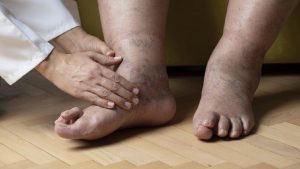Positioning a patient correctly during surgery is critical to their care. The Jackknife or Kraske position is one of the commonly used patient positioning methods.
This article explains the Jackknife position in detail, including its benefits and an illustration of how it looks.

What is the Jackknife Position (Kraske)?
The Jackknife position, also known as the Kraske position, is a prone patient position where the operating table is adjusted to resemble an open pair of scissors. In this position, the patient’s hips are elevated while the head and legs are lower.
This position creates significant pressure on the knees, so additional padding is typically used to support them and reduce discomfort. Other pads are also used to cushion the body and reduce pressure on areas like the pelvis, back, and abdomen.
To place the patient in this position, a medical team must work together. At least four people are required to safely lift and position the patient on the operating table.
Also read: PQRST Pain Assessment Method: An Important Tool in Medical Pain Evaluation
When is the Jackknife Position Used?
The Jackknife position is commonly used for colorectal surgery, spinal surgery, or adrenal gland procedures.
“Colorectal” refers to the large intestine (colon) and rectum, while the adrenal glands are part of the endocrine system located above the kidneys. These glands produce essential hormones like adrenaline and cortisol, which help regulate metabolism, the immune system, blood pressure, and stress responses. One major reason surgeons prefer the Jackknife position is the optimal visibility it provides during surgery. In this position, surgeons can view the surgical area more clearly without straining or adopting uncomfortable body positions.
Better visibility allows the surgical team to perform with greater precision. With fewer visual or physical obstructions, they can work more efficiently and minimize the risk of complications during the procedure.
Steps to Achieve the Jackknife Position
Here are four essential steps to properly implement the Kraske/Jackknife position:
- Preparing the Bed: Ensure that the patient’s bed is designed to fold in a manner resembling an open pair of scissors. This allows the patient to lie prone (face down) with their hips elevated, while their legs and head remain in a lower position. The special design of the bed is crucial for achieving the correct Jackknife position and ensuring the patient’s comfort during the procedure.
- Transferring the Patient onto the Bed: Move the patient onto the prepared bed and position them face down (prone). This step requires the coordinated effort of at least four people to safely lift and position the patient. The team must work together to carefully maneuver the patient into the correct Jackknife position without causing unnecessary strain or injury. This step is crucial to avoid complications during the procedure.
- Providing Padding for Body Support: The use of additional padding on the patient’s bed is a critical element in the Jackknife position. These pads help support the patient’s body and reduce pressure on specific areas that could experience discomfort due to awkward positioning, especially the back, abdomen, and knees. Proper padding ensures that the patient remains comfortable and minimizes the risk of pressure sores or nerve damage during surgery.
- Positioning the Patient’s Arms: In the Jackknife position, the patient’s arms can either be bent and secured along the sides of their body, or extended out to the sides and strapped onto cushioned armboards. This is done to prevent the arms from moving during the procedure and to ensure the patient’s safety. The arm placement depends on the type of surgery and the surgeon’s preference, but they must always prioritize the patient’s comfort and safety.
Also read: Fluid Balance: Definition, Formula and How to Calculate
Contraindications for the Jackknife Position
Though the Jackknife position is commonly used in proctology (the study of rectal diseases) and anorectal surgeries, there are some contraindications, such as:
- Anesthesia Concerns
One concern with the Kraske/Jackknife position is maintaining airway safety during anesthesia. Sometimes, patients are positioned in a lithotomy position (often used during childbirth) as an alternative to reduce this risk. However, there is no direct evidence that the Kraske position restricts the airway. - Patient Factors
Certain physical conditions, like obesity, pregnancy, or ascites (fluid buildup in the abdomen), may prevent the patient from being safely positioned in the Jackknife position. - Physiological Factors
The Jackknife position carries risks, particularly with breathing and circulation. The diaphragm’s restricted movement can make breathing difficult, and increased blood pressure in the lungs can reduce lung flexibility.
Key Considerations for the Jackknife Position
The Jackknife position can impact cardiovascular function and reduce blood flow back to the heart. This increases the risk of deep vein thrombosis (DVT), so it’s important to monitor patients closely for symptoms.
Additionally, general safety measures should be followed, such as:
- The hips should be positioned over the middle of the operating table.
- The head should face away from the surgical area.
- The operating table should be adjusted to the Jackknife position slowly. The patient should be monitored to ensure they remain properly aligned, with the hips positioned over the center of the table.
- Safety straps should only be applied after the patient is fully positioned. If applied earlier, they can cause friction injuries during the table’s adjustment. Safety straps should be placed 2 inches above the knees.
- Patients should return to a flat position as soon as possible after the procedure.
Always communicate with your healthcare provider about any concerns you may have to ensure that you are positioned in the safest and most appropriate way for your procedure.
If you need home care assistance, Kavacare’s trusted medical team is here to help. Call us at 0811-1446-777 to consult with a doctor or arrange for home care services in Jakarta, Bekasi, Tangerang, Depok, and Tangerang.
Source:
- Anatomy, Patient Positioning – StatPearls – NCBI Bookshelf. https://www.ncbi.nlm.nih.gov/books/NBK513320/. Diakses 3 Januari 2024.
- Patient Positioning: Sims Position, Fowler’s Position | Knowledge Center . https://www.steris.com/healthcare/knowledge-center/surgical-equipment/complete-guide-to-patient-positioning. Diakses 3 Januari 2024.
- Mastering Patient Positioning: 13 Essential Types for Nursing Care. https://simplenursing.com/guide-to-patient-positioning/. Diakses 3 Januari 2024.
- Kraske or Jackknife position. https://www.operatingroomissues.org/kraske-or-jackknife-position/. Diakses 3 Januari 2024.
- AST Standards of Practice for Surgical Positioning. https://www.ast.org/uploadedfiles/main_site/content/about_us/standard%20surgical%20positioning.pdf. Diakses 3 Januari 2024.
- Adrenal Gland: What It Is, Function, Symptoms & Disorders. https://my.clevelandclinic.org/health/body/23005-adrenal-gland. Diakses 3 Januari 2024.



